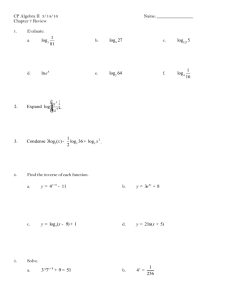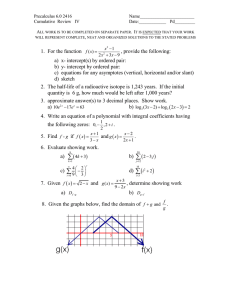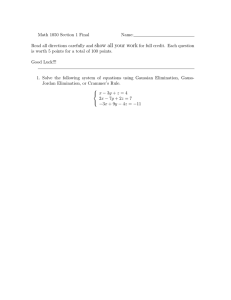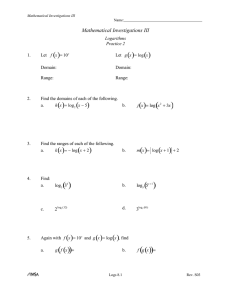For each of the following functions, indicate how much the function`s
advertisement
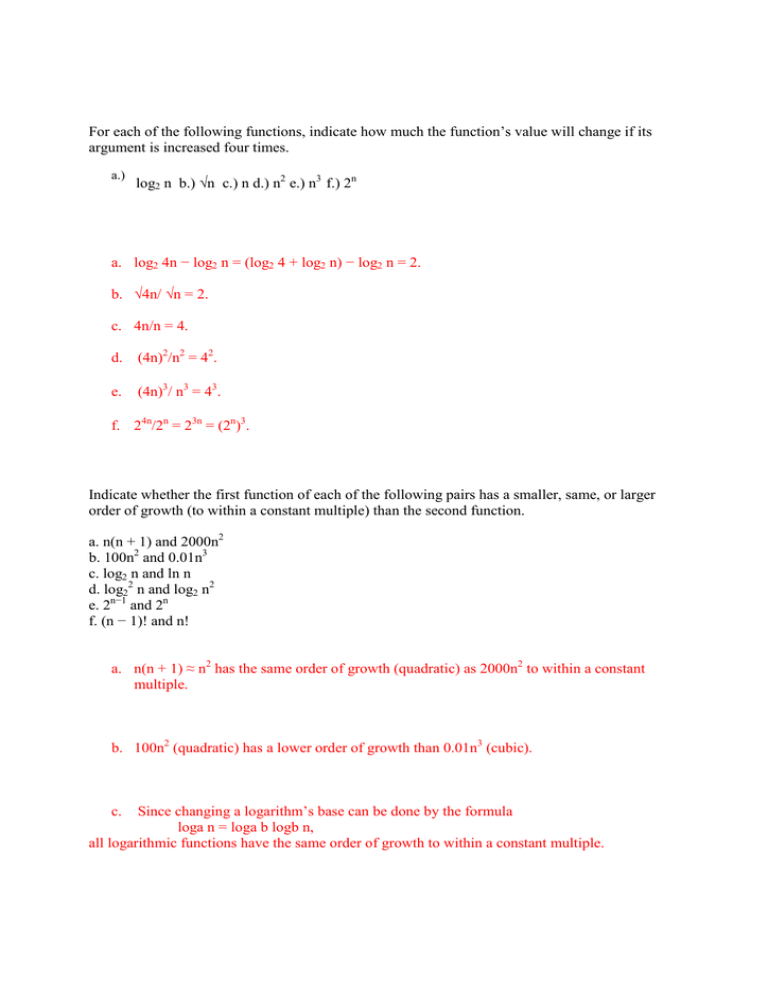
For each of the following functions, indicate how much the function’s value will change if its argument is increased four times. a.) log2 n b.) √n c.) n d.) n2 e.) n3 f.) 2n a. log2 4n − log2 n = (log2 4 + log2 n) − log2 n = 2. b. √4n/ √n = 2. c. 4n/n = 4. d. (4n)2/n2 = 42. e. (4n)3/ n3 = 43. f. 24n/2n = 23n = (2n)3. Indicate whether the first function of each of the following pairs has a smaller, same, or larger order of growth (to within a constant multiple) than the second function. a. n(n + 1) and 2000n2 b. 100n2 and 0.01n3 c. log2 n and ln n d. log22 n and log2 n2 e. 2n−1 and 2n f. (n − 1)! and n! a. n(n + 1) ≈ n2 has the same order of growth (quadratic) as 2000n2 to within a constant multiple. b. 100n2 (quadratic) has a lower order of growth than 0.01n3 (cubic). c. Since changing a logarithm’s base can be done by the formula loga n = loga b logb n, all logarithmic functions have the same order of growth to within a constant multiple. d. log22n = log2 n log2 n and log2 n2 = 2 log2 n. Hence log22 n has a higher order of growth than log2 n2. e. 2n−1 = ½ 2n has the same order of growth as 2n to within a constant multiple. f. (n − 1)! has a lower order of growth than n! = (n − 1)!n. Use the informal definitions of O, Θ, and Ω to determine whether the following assertions are true or false. a. n(n + 1)/2 ∈ O(n3) b. n(n + 1)/2 ∈ O(n2) c. n(n + 1)/2 ∈ Θ(n3) d. n(n + 1)/2 ∈ Ω(n) n(n + 1)/2 ≈ n2/2 is quadratic. Therefore a. n(n + 1)/2 ∈ O(n3) is true. b. n(n + 1)/2 ∈ O(n2) is true. c. n(n + 1)/2 ∈ Θ(n3) is false. d. n(n + 1)/2 ∈ Ω(n) is true. Order the following functions according to their order of growth (from the lowest to the highest): (n−2)!, 5 lg(n+100)10, 22n, 0.001n4+3n3+1, ln2 n, 3√n, 3n. (n−2)! ∈ Θ((n−2)!) 5 lg(n+100)10 = 50 lg(n+100) ∈ Θ(log n) 22n =(22)n ∈ Θ(4n) 0.001n4 + 3n3 + 1 ∈ Θ(n4) ln2 n ∈ Θ(log2 n), 3√ n ∈Θ(n1/3) 3n ∈ Θ(3n). The list of these functions ordered in increasing order of growth looks as follows: 5 lg(n + 100)10, ln2 n, √3 n, 0.001n4 +3n3 +1, 3n, 22n, (n − 2)! a. Prove that every polynomial of degree k, p(n) = aknk + ak−1nk−1 + ... + a0, with ak > 0 belongs to Θ(nk). b. Prove that exponential functions an have different orders of growth for different values of base a > 0. Compute the following sums. a. 1 + 3 +5 + 7 +... + 999 b. 2 +4 + 8 + 16+... + 1024



